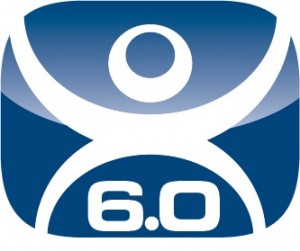 This is the second in a three part article focusing on the entire process of Virtualizing in an industrial environment. While there is a lot of talk about Virtualizing and VDI, we wanted to focus on the viability and deployment of Virtualization in an industrial and manufacturing environment which would speak to the concerns and difficulties specific to this industry.
This is the second in a three part article focusing on the entire process of Virtualizing in an industrial environment. While there is a lot of talk about Virtualizing and VDI, we wanted to focus on the viability and deployment of Virtualization in an industrial and manufacturing environment which would speak to the concerns and difficulties specific to this industry.
Part 2: How Much Virtualization is Needed?
In Part 1 of this series, we discussed the need to centralize computer resources before considering whether or not to virtualize them. The vast majority of ThinManager customers use Remote Desktop Services (formerly Terminal Services) as their Centralization solution. One reason for this is that RDS is included with every Windows Server installation, so there are fewer initial costs incurred when centralizing.
In Part 2 we continue to explore whether or not Virtualization is necessary once you’ve centralized, and, if it is, how far do you go. For many customers the buck stops with RDS. Being able to install OS’s and applications once and having them deploy to multiple clients can provide enough time savings and reduced administrative headaches that Virtualization could very well just be an added cost to a system that already does everything the end user requires.
Let’s say you are already using a centralized system in your processing or manufacturing facility and all is well. Your numbers are steady and consistent, your employees are 
familiar with the system, and you are able to effectively manage hardware support and maintenance. But you still can’t shake the feeling that you should move forward and virtualize. After all, every single industry publication you read insists that Virtualization is necessary to stay competitive. Other people in your company have even asked why the competition has virtualized while you have not (they must be reading those same publications).
Apparently, Virtualization is the answer…but the answer to what? Your company and individual facilities are churning along just fine while the voice inside your head keeps repeating, “If it ain’t broke, don’t fix it!” But that is an old axiom that doesn’t take into consideration the rapid expansion of technological improvements. After all, at some point the creators of many fine products such as the cassette player and the rotary phone said the same thing.
Once you decide to virtualize, the real question becomes WHAT do I virtualize? Your current system should dictate which path to take between these two common options:
Remote Desktop Server: As we discussed, running RDS as your Centralization Solution offers many users enough benefit to stop there. However, if you’re going to implement Virtualization, why not start with virtualizing the RDS server itself? There are two key benefits you can realize by applying Virtualization to your Remote Desktop Server:
1) Apply upgrades and patches directly to a virtual instance of your server to test whether or not the updates will work as expected when applied to the live environment, which dramatically reduces the chances of system downtime that could affect daily production volume.
2) Create snapshots of your “working” server configuration that will allow you to easily restore the server if a problem is encountered.
The vast majority of ThinManager customers using a Terminal Server have come to realize a greater ROI through effective deployment and management in a “1:1 OS to Box “architecture. If your environment is dynamic enough that this will increase your productivity and reduce maintenance, then taking the next step to virtualize will produce benefits and cost savings.
Desktop Virtualization: Commonly referred to as “Virtual Desktop Infrastructure” (VDI), this is a concept that fully separates the PC or client desktop environment from the physical machine being used. Different software platforms have a wide variety of options and applications unique to their platform so serious consideration must be taken when choosing one that might improve your current system architecture. It is important to note that even though you can virtualize your operating system, you can only deliver applications…not virtualize them.
In general, this is the most hardware intensive option and may require more hardware usage than virtualizing Terminal Servers, purchasing additional hardware, and increasing maintenance and support.
Once you have determined if either of these options would work within your current environment, you will be ready to move forward.
Next week we will complete this three part series by discussing the best way to deploy and manage centralized or virtualized components to the end user clients on your network.
*For more information regarding implementation of a centralized system in your industrial facility, contact one of our experts (http://www.thinmanager.com/acp/contactus.php)
